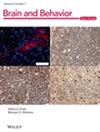Can EEG-Neurofeedback Training Enhance Effective Connectivity in People With Chronic Secondary Musculoskeletal Pain? A Secondary Analysis of a Feasibility Randomized Controlled Clinical Trial
Abstract
Introduction
Persistent musculoskeletal pain is associated with altered functional and effective connectivity (EC) between cortical regions involved in pain processing. Especially, disruptions in the infraslow fluctuation (ISF) frequency band can contribute to pain persistence. ISF electroencephalography-neurofeedback (EEG-NF) has emerged as a potential non-invasive neuromodulatory intervention targeting cortical brain regions to restore balance and modulate pain-related pathways. However, limited research explores its effect on EC, a measure of directional information flow critical to pain experience and modulation.
Methods
A secondary analysis was performed using data from a randomized, double-blind, sham-controlled feasibility clinical trial. Participants with chronic painful knee osteoarthritis (OA) were randomized to receive either ISF-NF or sham-NF. Nine neurofeedback sessions targeted the pregenual anterior cingulate cortex (pgACC), dorsal anterior cingulate cortex (dACC), and bilateral primary somatosensory cortex (SSC: S1Lt & S1Rt). EEG data was collected at baseline and post-intervention. Granger causality was used to measure EC changes, and between-group statistical analyses were conducted with adjustments for multiple comparisons.
Results
Twenty-one participants (mean age: 61.7 ± 7.6 years; 62% female) completed the study. ISF-NF training significantly improved EC between pgACC and dACC, pgACC and SSC, and other targeted regions, while reducing EC from S1Rt to dACC. Changes were observed predominantly in the ISF frequency band, indicating enhanced cortical communication and modulation of pain pathways.
Conclusion
ISF-NF training enhanced EC in cortical regions implicated in pain processing, supporting its potential as a neuromodulatory intervention for chronic musculoskeletal pain. Further trials are needed to confirm clinical efficacy and optimize protocol designs.


 求助内容:
求助内容: 应助结果提醒方式:
应助结果提醒方式:


